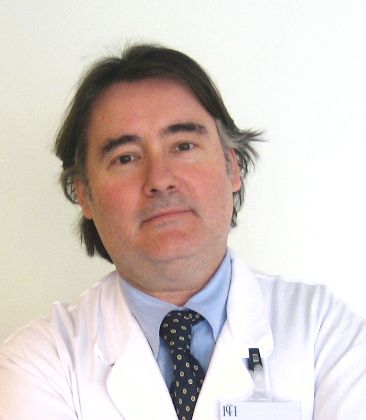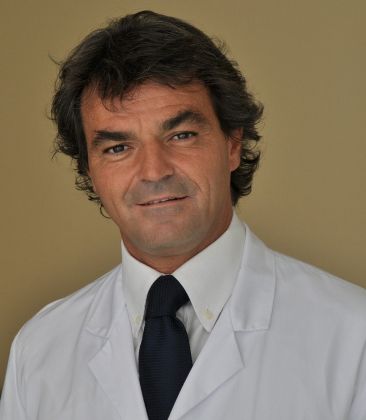Breast cancer develops due to uncontrollable division of abnormal cells of the mammary gland, which consists of structures that produce milk, lobules and ducts, as well as of adipose tissue and stroma. These abnormal cells can spread to surrounding tissues and/or create dangerous metastases in other organs. It is the most common cancer in women, affecting one in eight women, and is the leading cause of oncology –related deaths in women between 40 and 55 years of age.
We interviewed Dr. Andrea Sagona, breast specialist at Humanitas, to learn more on the topic.
Breast cancer: risk factors
Almost all breast cancers are of glandular origin (lobular 25% and ductal 70%), while about 5% of the total cases are rarer types of cancer. The most common type of tumor originates from the cells lining the ducts and is thus called a ductal tumor. The second most frequent type of cancer is called “lobular” because it originates from the lobules. Carcinomas, regardless of the type (ductal or lobular), are divided into carcinomas in situ (confined to the breast) and infiltrating carcinomas, i.e. capable of invading the lymphatic and blood vessels with their cells and, therefore, of metastasizing. If diagnosed early, the tumors have a high chance of being cured, with women demonstrating up to 98% disease-free survival rate after 5 years (with the figure declining in the later stages).
Some factors affecting the development of breast cancer are:
- having relatives affected by breast cancer: the closer the degree of kinship is, the higher the risk;
- genetic mutations, eg. BRCA1 and BRCA2: a mutation of one or both of these genes causes an increased risk of getting breast and ovarian cancer;
- age: the incidence increases with age, doubling every 10 years until menopause;
- gynecological history: early menarche (first cycle before 8 years of age) and late menopause (last cycle after 55 years of age) increase the risk of developing breast cancer, due to the more prolonged exposure to female hormones;
- lifestyle: high alcohol consumption, obesity, high consumption of animal fats and cigarette smoking increase the risk of breast cancer.
Humanitas Cancer Center employs various treatment options, providing patients (including the rare male patients) with the appropriate and most personalized treatment possible, guaranteeing maximum safety, and striving to maintain the pre-diagnosis quality of life.
Breast cancer: the importance of an early diagnosis
Diagnosing cancer as early as possible is vital to its successful treatment. In fact, if the tumor is found when it is still very small, there is a very good chance of complete recovery.
Mammography constitutes a fundamental tool in breast cancer diagnostics. It is a radiological method that allows specialists to locate even the smallest nodules, not yet palpable during manual examination, as well as analyze groups of microcalcifications (small aggregates of calcium deposits), which could be a sign of a breast pathology. In Italy, for instance, the breast cancer prevention program offers all women between the ages of 45 and 74 a free mammography exam every two years. Additionally, doctors rely on the ultrasound, for younger patients or in addition to mammography. This diagnostics technique uses the reflections of an ultrasound beam to form an accurate image of the breast tissue. The ultrasound allows establishing the nature of a nodule, differentiating solid nodules from cysts, and can be used as a guide for biopsy examinations.
Nuclear magnetic resonance (NMR), which uses magnetic fields to process detailed images of the internal structures of the body, is used as a “second level” examination to clarify pictures resulting from mammography and ultrasound, and is employed in particular situations, such as for patients undergoing preoperative tumor reduction therapies or for implant status monitoring.
Needle biopsy, performed after the injection of a local anesthetic, allows doctors to extract tissue samples from the breast lump. The collected material, analyzed by the pathology department, provides almost all the information required to characterize the tumor.
Breast cancer treatment
Breast tumors come in various histological forms (in situ or infiltrating) and have several stages (defined by tumor size, involvement of the lymph nodes or distant metastases). The choice of therapy, therefore, depends on a number of factors: for example, the histological and biological characteristics of the tumor and the peculiarities of the patient (such as age or the presence of other diseases), which can affect the clinical history of the disease and the response to therapy. Therapeutic strategies consist of loco-regional treatments (such as surgery and radiotherapy) and adjuvant therapies (such as chemotherapy, hormone therapy, molecular target therapy), the latter performed following surgery in order to complete the loco-regional treatment. The choice of the adjuvant therapy best suited to each individual case depends on the profile of the tumor and, thus, on the individual risk of the tumor returning or developing metastases. We have obtained significant increase in patient survival in the past thirty years largely thanks to the optimal integration of these therapeutic options.
Thus, when the tumor is localized, surgeons remove the tumor itself along with small part of the surrounding tissue. In these cases, specialists always try to opt for conservative surgery (quadrantectomy), which guarantees the best aesthetic results, especially when combined with reconstruction of the residual glandular tissue with plastic/aesthetic surgery techniques. If, however, the tumor is larger (in relation to the size of the breast) or spread over several breast quadrants, it may be necessary to remove the entire breast (mastectomy) and perform a reconstruction with an implant, which is performed at the same time. If the diagnosis is a non-infiltrating tumor (tumor in situ), the surgery involves the removal of the tumor, ensuring a minimum margin of healthy tissue around it (quadrantectomy or mastectomy based on the extent of the disease). In cases of infiltrating tumors, on the other hand, the patient first undergoes staging diagnostics (abdomen ultrasound, chest x-ray, PET and/or CT, bone scan), to assess the extent of the disease in other organs and define subsequent treatments. In cases when the disease has not affected other organs, the surgeons remove the tumor itself (through quadrantectomy or mastectomy), as well as the sentinel lymph node. The sentinel lymph node is the lymph node in the axillary cavity that could contain tumor cells that have metastasized through the lymphatic vessels and towards the axillary lymph nodes, which are one of the most frequent sites of extra-mammary tumor localization. In cases of conservative surgery, the current practice is not to remove axillary lymph nodes, as was done in the past, as several studies have shown that their removal, while not bringing significant benefits, often causes chronic swelling of the arm, as well as other side effects. In the case of mastectomy, on the other hand, if the sentinel lymph node is affected, the surgeons remove axillary lymph nodes.
Radiotherapy
Following the removal of the tumor, the doctors use radiotherapy to decrease the risk of the disease returning. Radiotherapy is prescribed to almost all patients who underwent conservative surgery, as well as to certain patients after mastectomy (in cases of large tumors or with major involvement in the lymph nodes). Radiotherapy prevents the formation of new carcinomas and decreases the risk of relapse on the treated area, through the use of ionizing radiation (generally x-rays) to eliminate residual tumor cells and sterilize the area adjacent to the neoplasm (site of the 80% of cases of relapses), thus preventing a new proliferation of diseased cells locally. Humanitas radiotherapy specialists establish the area to be treated by radiotherapy based on the type of breast surgery, the biological characteristics of the tumor, and whether or not the lymph nodes are involved. Indeed, radiotherapy is increasingly personalized to the clinical needs of the individual patient.
Hormone therapy
Hormone therapy are drugs that are administered following surgery and that the patient may have to take for a prolonged time (years) and is useful for tumors that test positive for the presence of estrogen and/or progesterone receptors on the cell surface. As these hormones stimulate tumor growth, hormonal drugs, with their targeting action, inhibit the effect of these hormones.
Chemotherapy
Chemotherapy consists of the administration of multiple drugs, generally intravenously (but in some cases also via oral tablets), so that the drug, carried by the bloodstream, spreads throughout the body and attacks cancer cells. Chemotherapy is essential for tumors that do not express hormone receptors, or in the forms with the highest risk of relapse (large tumors, many involved lymph nodes, etc.).
New biological drugs have been developed, which selectively target tumor cells (monoclonal antibodies such as trastuzumab) or which stimulate the body’s immunological response against tumor cells (atezolizumab).





